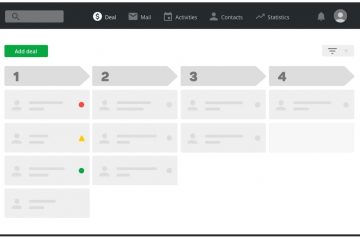Sales Lead Management – A Simple Process to Not Miss Leads
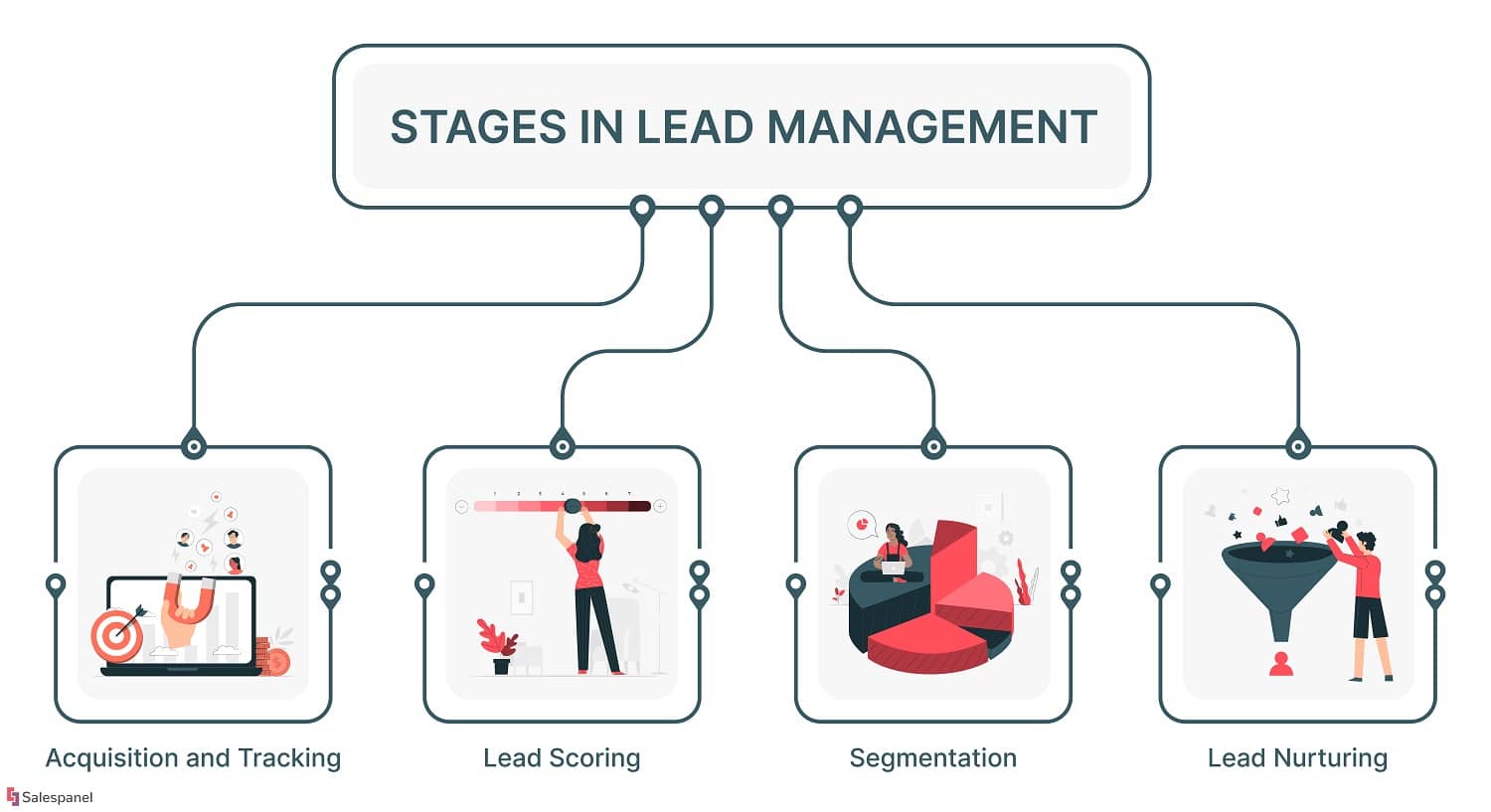
Generating leads is the most important function for any business with an objective to grow over the long term. Marketers do say that lead generation is a difficult process to carry out, but that has changed drastically in the recent decade thanks to digital marketing that transcends across borders.
The world is one big market, and every person with access to the internet has access to this market. Automation, AI, and machine learning have impacted the world in a big way individually. An outcome of that is observable in the marketing industry in the form of technology-assisted lead generation and customer creation.
This did make lead generation easy compared to earlier times but considering how big the online global market is, these automated software solutions generate a large number of leads which can overwhelm your business’ capacity to handle and process leads.
Moreover, we know that the majority of these generated leads will not be suitable enough to enter the sales funnel. This makes it necessary to filter out those and identify the ones that have the highest chance of turning into a sale.
This is where Sales lead management steps it. What it allows us to filter out all the low to medium quality leads and identify the top high quality leads that your sales and marketing teams can handle properly.
What is Sales Lead Management?
Sales lead management is the process of nurturing, tracking, qualifying, and managing leads before they are passed on to sales for closing. It is a process that utilizes careful planning and designing functions and workflows that enable a business to identify, track, qualify, and nurture leads in such a manner that it raises the business’s conversion rate and the average value that every lead brings in.
Using technology to meticulously manage leads helps in increasing the proportion of easy-to-convert leads among the total leads acquired. As a result, over the long run, a business experiences steady growth in terms of profitability and sales.
A result of this is that the business has a bigger proportion of sales qualified leads. These leads can be handed over to quota-carrying reps, who can then convert them into customers.
Carefully monitoring and evaluating leads at every step in the sales funnel benefits the business in two ways. Firstly, high-value leads that aren’t as sure about making the purchase can be nurtured further to ensure even they convert. Secondly, this ensures that no high-value leads spill out of the sales funnel due to unknown reasons.
In order to be relevant over the long run, every business needs to conserve resources and raise its level of productivity in order to survive in the ever so competitive online business world. Sales lead management enables a business to ensure all of this while boosting conversion consistency, essential for steady long-term growth.
Stages in the Lead Management Process
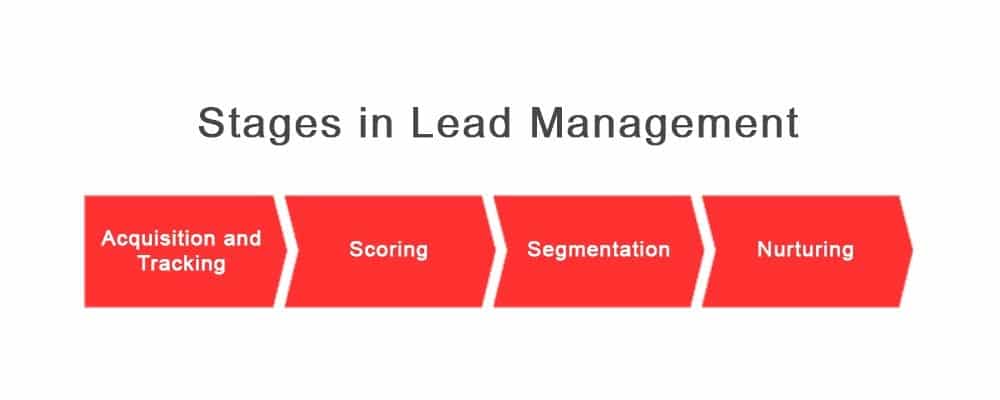
1. Acquisition and Tracking
Acquiring leads is where the process starts, and the basics of the process of lead acquisition are quite standardized. Attract traffic to your website using a potent marketing mix and provide the audience with value in the form of content.
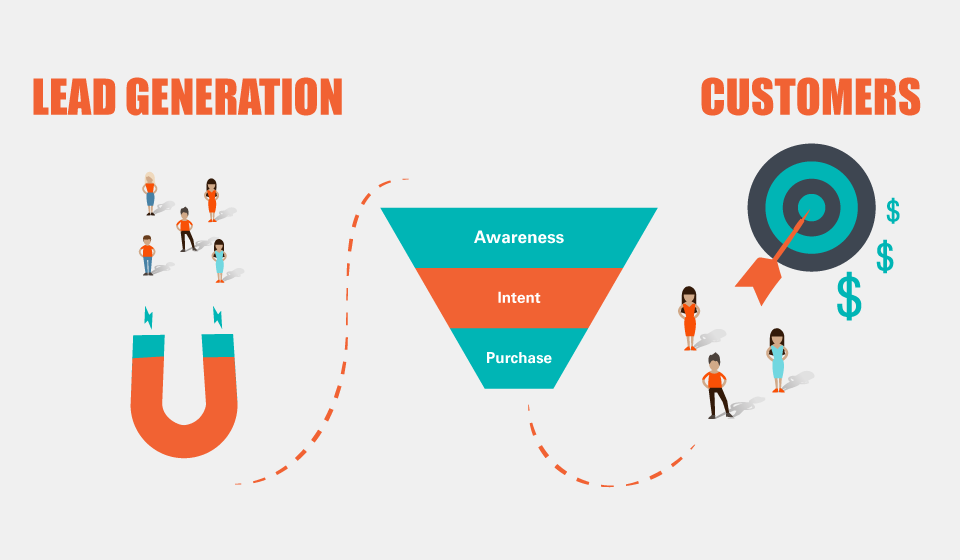
Image Source -business2community.com
If they discover value in the content you provide, it will create a positive impression and initiate trust. Follow up with effective calls-to-action everywhere necessary on the web pages, which lead readers to your product/service and contact acquisition forms. Once they’ve filled the form, you have a lead!
Now that you have a lead’s primary contact information, you proceed to gather additional information about the lead by the process of lead tracking. In essence, you track a lead’s activity on your website and also observe how they respond to various triggers and touchpoints. If you are using Salespanel, for example, it automatically captures leads who fill out your forms (newsletter subscription, product sign-up, etc.) or schedule meetings using website widgets like Calendly. They are also tracked in real-time, and you would know what they did both before and after their sign-up.
All this gathered data pertaining to their behavior will help you understand where they stand in the buying process and qualify leads while gradually pushing them further in the sales cycle.
2. Lead Scoring
Lead Scoring has become essential to the process of lead qualification. Having a robust lead scoring system in place helps a business a lot in qualifying and prioritizing leads based on the scores they carry. It is a method used to gradually score leads with numerical values based on their profile and behavioral characteristics. Lead scoring takes your leads from the first stage of the lead management funnel to the last stage before they are passed on to sales.
The following attributes are considered to be key scoring parameters:
- Job Title
- Location
- Industry
- Firm Size
- Revenue
- Page Visits
- Visit duration
- Video views, button clicks, custom events, etc.
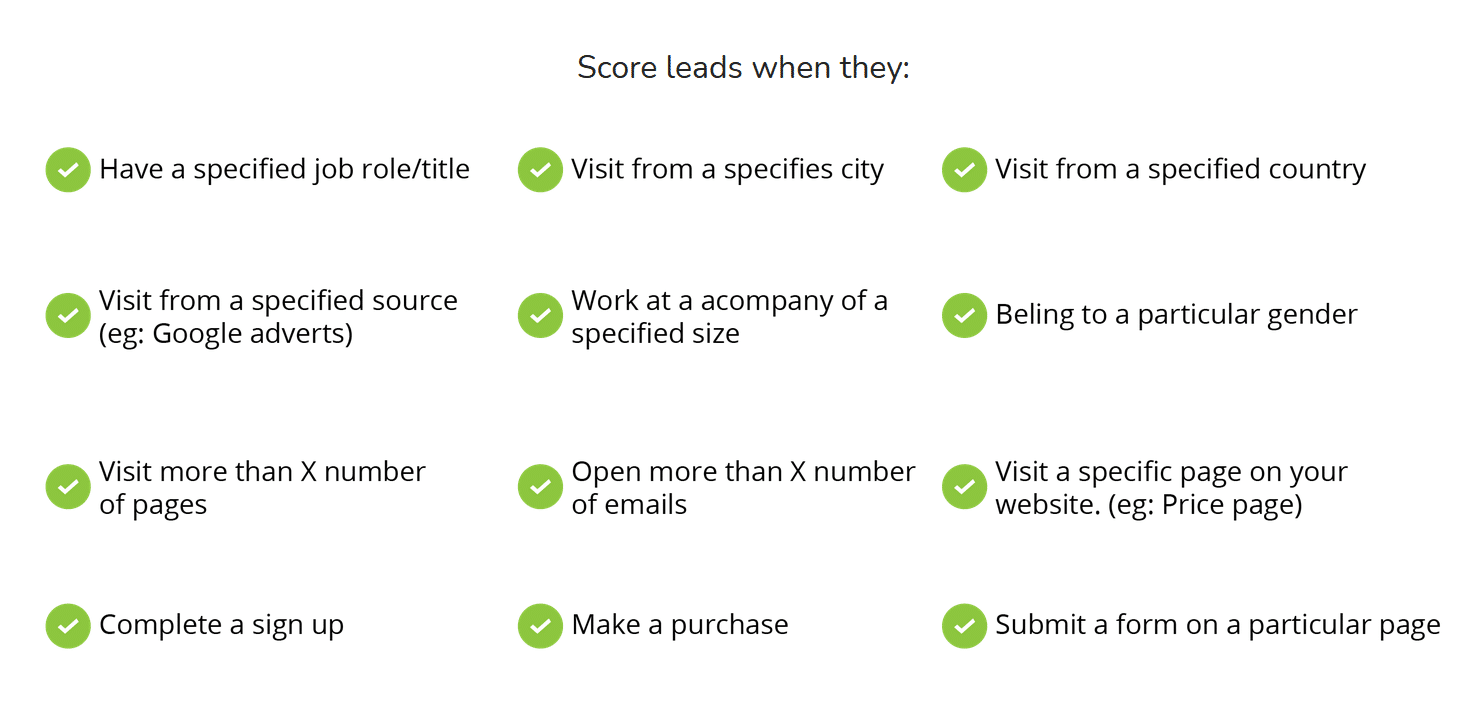
Leads with higher scores are more likely to buy or be ‘higher ticket’ and therefore will bring in more value for your business. Higher quality leads, when converted, translate into a higher Annual Contract Value (ACV) and Lifetime Value (LTV). Thus, more efforts and resources can be allocated to pursuing and converting these leads.
Resources of the sales team can then be allocated according to the results and less wastage and optimum utilization of a business’s resources. All of this results in faster and more efficient sales cycles.
A few paragraphs are not enough to talk about qualification and lead scoring, which is why we recommend you to read these articles:
Setting Up Predictive Lead Scoring Using Machine Learning
Set up a Data-Driven Lead Scoring System in less than 20 minutes
3. Segmentation
Leads can be segmented for several reasons. To match with ICP, to separate based on buyer persona, to separate based on region or company type, and the list goes on. In a sales management funnel, they can be segmented into three classes on the lead quality, value, and how far they are into the buying process.
The three classes are:
Information Qualified Leads (IQLs): Leads that provide their primary contact information in return for some useful information are classified as Information qualified leads.
Marketing Qualified Leads (MQLs): Leads that have provided contact information and have conveyed their interest in the product or service by way of inquiry, checking out the pricing page, etc., are classified as Marketing Qualified Leads.
Sales Qualified Leads (SQLs): Also known as hot leads, these leads are interested and almost about to make a purchase and should be followed up quickly by the sales team.
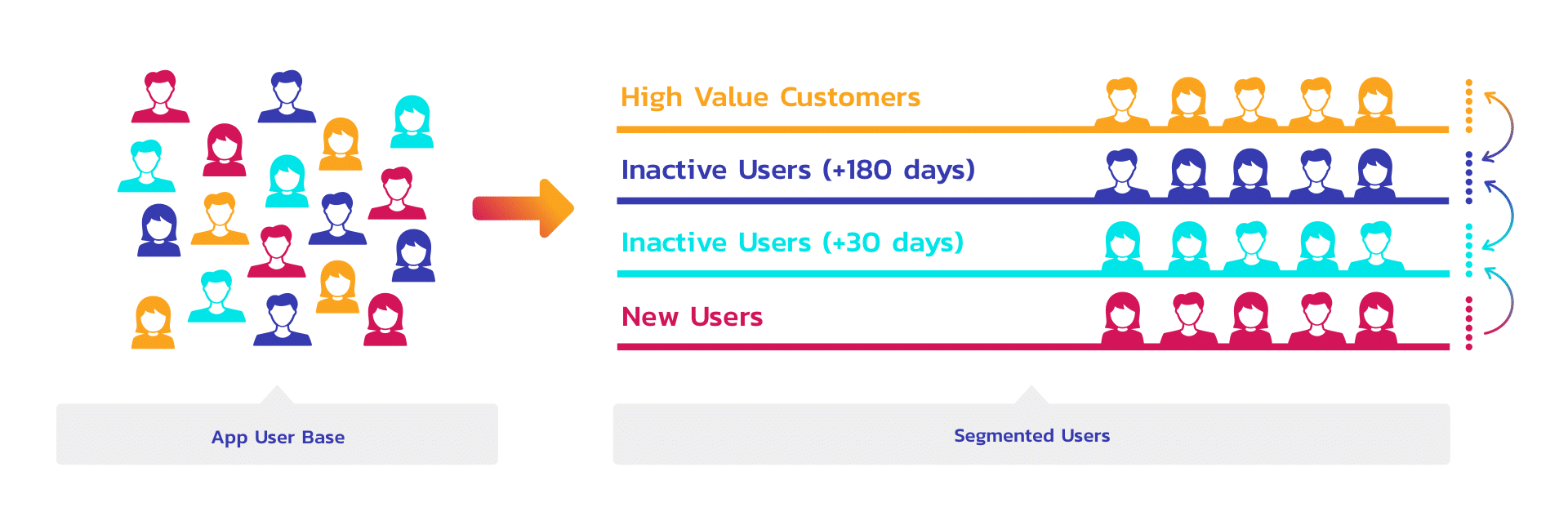
Image Source: Soft Script
Thus, as SQLs are ready to make a purchase, they’re forwarded to the quota-carrying reps on a priority basis. MQLs have a high potential of being converted but require to be nurtured more. This can be done in the form of providing a demo, conversation with a sales executive, additional information, and client testimonials.
Segmentation can be done in parallel to lead scoring to combine different traits. For example, on Salespanel, you can create a segment to filter out leads from the USA who have a lead score of more than 75 (or any other number).
4. Lead Nurturing
Lead nurturing is everything that comes between lead generation and lead conversion. This is the differentiating factor between only generating leads and generating leads and building a good rapport with them at every step in the sales process.
Nurturing your leads properly has benefits for your business as it transforms a client’s initial curiosity into confidence in regards to making a purchase. When a B2B lead drops to your website, they are not going to make an impulsive decision. They will continue to consume content both on your website and through your social channels and emails and slowly move through the funnel. Proper nurturing does the job of sending your leads from the start of the funnel to the very end of the funnel.
In a proactive system, leads are nurtured with dynamic content based on their interests. Remember when you searched for a product on Amazon and got similar products as ads when you visited social media later that day? Nurturing can be used to do something similar. A person interested in a particular product or service can be served content related to that product. We have discussed this in detail here.
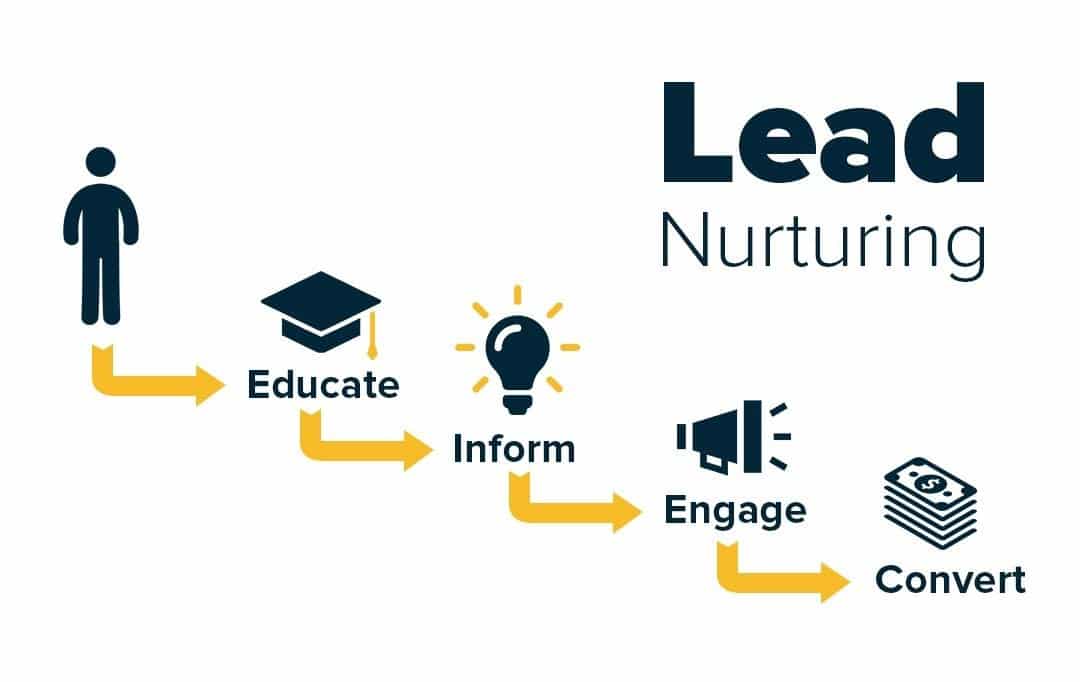
Image Source – getgist.com
MQLs can be followed up by providing them with more information regarding your products and services, having a representative talk to them and trying to understand their requirements, provide them with compelling offers or extended free trials, etc. SQLs will be nurtured by sales as they proceed for the close.
Tips for a Better Sales Lead Management Function
Define your Ideal Customer
Drafting and formulating an Ideal Customer Profile can be the best addition to your business’s lead management function. Knowing what type of customer your products and services benefit the most and who among those are most likely to make a purchase takes out the guessing work from your marketing and sales function.
You’ll be able to target leads effectively, which raises the overall efficiency and helps you attain steady growth in terms of sales. An ICP will even enable you to better segment high-quality leads and then you can approach each segment with a more personalized sales pitch. This will drastically improve your firm’s conversion rate.
Zero in on Best Lead Sources
Businesses generate plenty of data that can turn out to be beneficial for them in many ways. One such aspect is knowing which sources or channels are generating high-quality leads and which ones aren’t through marketing attribution. Knowing this can help you channel your efforts and resources to the sources and channels that provide you with the best high-quality leads.
You can double down on these channels to generate more leads and stop investing into sources and channels that aren’t providing justifiable returns. This will boost your lead generation efficiency and help you redirect resources to more productive channels or functions.
Also, ensure to regularly evaluate all channels to make changes when required. If you are on Salespanel, you can simply fire up Reports and attribute your best customers with acquisition channels. You can also create B2B lookalike audiences to replicate your best customers.
Clearing the Bottlenecks
The chances are that despite all the lead filtering and qualification process, some leads may end up getting stuck at some stage in the sales funnel. This is bound to create bottlenecks and slow down the entire sales pipeline.
In order to clear these bottlenecks and ensure a clean, fast flow in the sales pipeline, the stuck leads need to be taken out of the sales pipeline and addressed. It is necessary to know what caused a lead to get stuck. Was it changes in the budget requirement, or changes in the timeline, or indecisiveness of the buyer? You need to know the answer!
If their issues can be resolved, the lead can be reintroduced in the sales pipeline. Otherwise, it can be removed entirely.
A smoothly running sales lead management process will help you generate more customers and increase your ROI. If you have any questions, please reach out to us.
Sell more, understand your customers’ journey for free!
Sales and Marketing teams spend millions of dollars to bring visitors to your website. But do you track your customer’s journey? Do you know who buys and why?
Around 8% of your website traffic will sign up on your lead forms. What happens to the other 92% of your traffic? Can you identify your visiting accounts? Can you engage and retarget your qualified visitors even if they are not identified?
